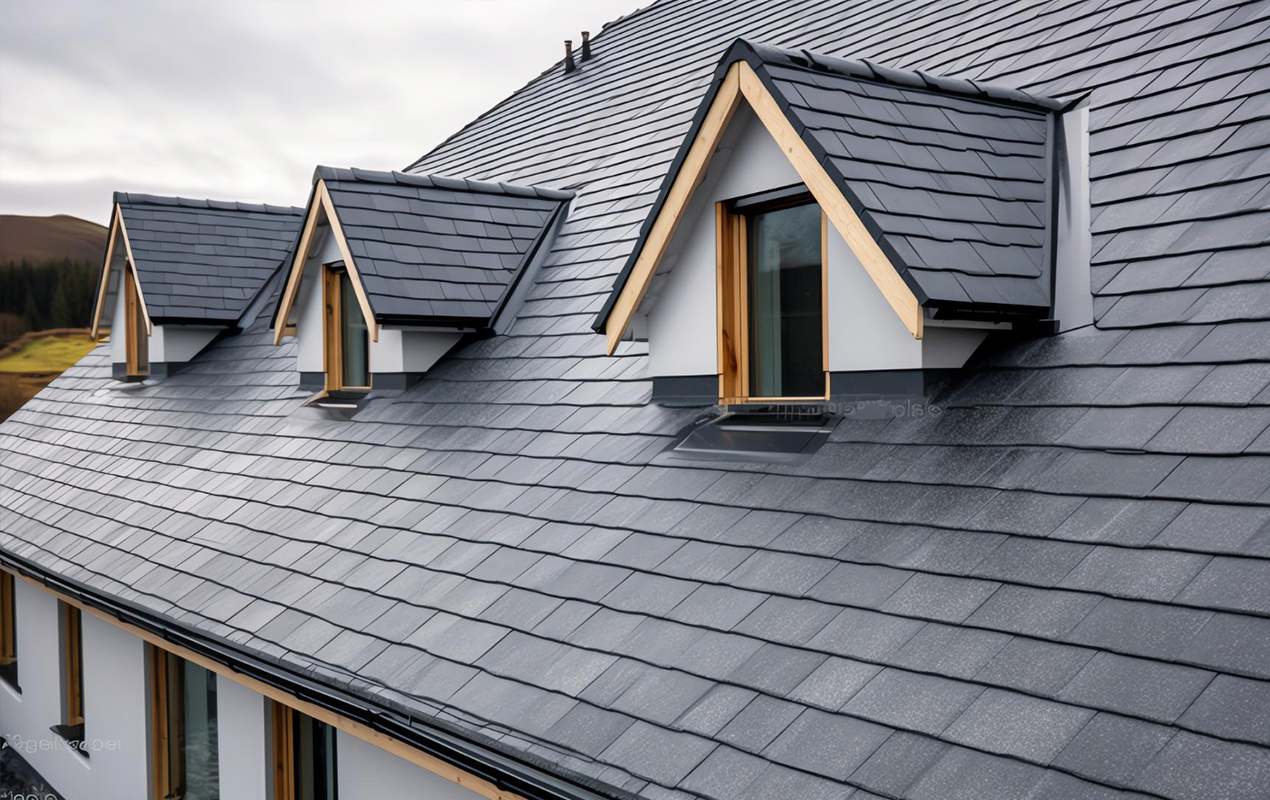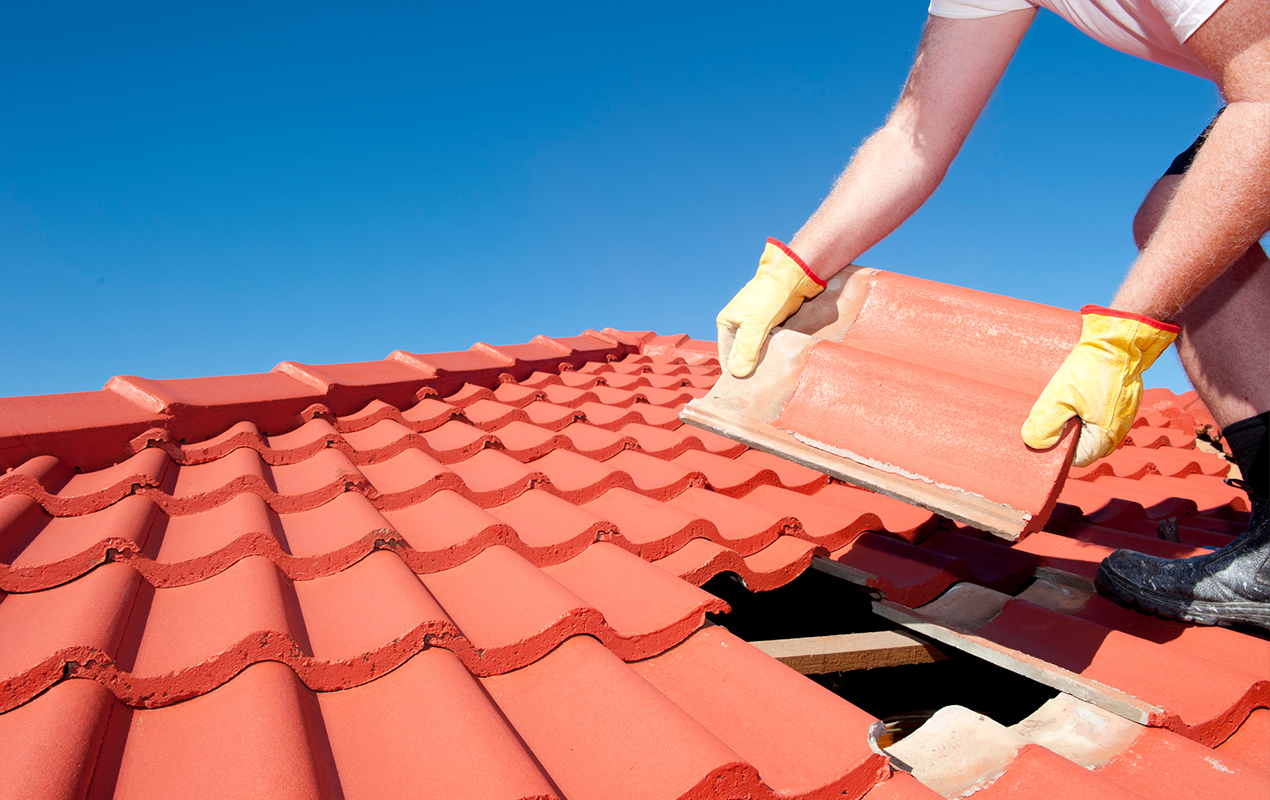The Essential Guide to Modern Chic Decor
Decorating your home is an exciting opportunity to let your creativity …

Your home’s roof does more than just provide shelter and protection. It’s a major part of your property’s overall look and curb appeal. The roof tiles you choose can either complement or clash with the rest of your home’s exterior design elements. Get it right, and your house will have a cohesive, pulled-together aesthetic. Get it wrong, and you could be stuck with an eyesore for decades.
No pressure, though. This guide will walk you through the key considerations for selecting roof tiles that effortlessly tie in with the siding, trim, and other exterior features of your humble abode.
Whether you’re installing new ones or replacing your tile roofs because of water damage with the help of reputable tile roof contractors, the first order of business is making sure your roof tile color coordinates nicely with the other colors adorning your home’s outside. This is easier said than done when working with the massively varied color palettes that both roofing and siding materials come in.
Exterior color coordination requires looking beyond just the surface hue and accounting for undertones. For example, a roof tile that looks like a warm terra cotta red could actually lean more orange or brown. If your siding has more blue undertones, that ‘red’ roof may clash hard. See how tricky this can get?
How can you decipher those sneaky undertones? The best solution is to get physical samples of both roofing and siding materials. Look at them separately, squint your eyes, and see what subtle shades emerge in bright light versus shade. Or place the samples side-by-side to see how their undertones interact. Bringing these samples outdoors can give you a better sense of how the colors will appear in their natural setting.
It’s also important to account for the natural variations that occur within batches of authentic materials like clay tiles or wooden shingles. Make sure to get multiple samples to see the full color range you’d be working with. While complete uniformity is more achievable with synthetic materials, some degree of organic shade variation can add depth and character.
Beyond color, you’ll want your roof tiles to visually complement the key stylistic elements and motifs found elsewhere on your home’s exterior façade.
As a general rule, you’ll want your roof shape and materials to align with your home’s overall architectural style and era. A Mediterranean-style villa looks best topped with barrel-clay roof tiles. A cozy Tudor cottage suits rougher, weathered wood shake shingles. And a sleek modern farmhouse meshes nicely with clean lines of metal roof tiles.

Photo by Adobe Stock
Within those broader roof shapes and materials, you can find tile varieties with customized profiles, finishes, and patterns that can tie into specific exterior details like:
Don’t just default to the most basic three-tab shingle or barrel-and-pan setup. Explore your tile roofing solutions to ensure they make a cohesive style statement in partnership with the rest of your home.
The pitch (or slope) of your roof planes is another geometric factor that influences which roof tiles will best suit the overall look. Steep pitches and angles require different tile profiles and installation methods versus low, shallow pitches.
On most residential roofs, you’ll encounter these common pitch ranges:
Knowing your roof’s pitch range will automatically filter down which tile options are ideal candidates from a pure installation and performance perspective before even getting into color and style preferences.
Once you’ve landed on some top-contender roofing tiles that check the boxes for color, style, pitch, and performance, it’s time to consider installation costs.
The prices for different types of roofing materials themselves cover a huge range. At the low end, basic three-tab asphalt shingles might cost $100-150 per square (a 10×10 ft area). At the same time, premium tiles like imported clay barrels or hand-cut natural slates can run over USD$1000 per square.
Then, you have to factor in labor installation costs, which also widely vary based on roof size, pitch, tear-off requirements for re-roofing, and overall job complexities. Roofing is a risky trade requiring experienced contractors. Their prices align with the skill levels needed for proper installation.
A straightforward ranch roof re-shingle might only be a USD$3,000-USD$5,000 labor job. But intricate rooflines, multi-pitch designs, and specialty materials like natural slate or clay can easily push labor costs into the USD$15,000 to USD$25,000+ range.
Many premium roofing tiles also demand additional underlayment, flashing details, fasteners, and installation methods that jack up overall costs compared to basic shingle tear-off and re-nail methods.
So in addition to getting samples of vet styles and colors, you’ll want to thoroughly quote the full installed costs for your shortlist of roofing tile options to avoid budget surprises. Those costs can make or break which direction you ultimately decide to go.
Style and budget aren’t the only factors that should influence your roofing tile selection. There are some other practicalities to weigh as well: climate and weather resilience, energy efficiency, and longevity. To navigate these practical considerations effectively and make informed decisions, consulting with knowledgeable area roofing contractors can be extremely beneficial.
Make sure any roofing tiles you’re considering can adequately withstand your local climate conditions. For instance, impact-resistant tiles may be wise in hail-prone areas. Temperature-rated tiles are important if you experience intense heat or harsh winter freeze/thaw cycles.
Natural hazards like wildfires, hurricanes, or seismic activities could also call for specialized roofing materials that meet certain code requirements for your risks.
Lighter-colored roofing tiles that reflect more solar heat versus absorbing it can make cooling costs more manageable in sunny climates. Cool roof-rated tiles and coatings are also available to enhance energy efficiency.
Conversely, in colder climates, you may want tiles that absorb and retain more heat to reduce heating demands.
Roofing tiles run the gamut in terms of expected lifespans and maintenance needs. More affordable asphalt options might only last 15-25 years, and periodic repairs are required. Sturdy clay, concrete, and quarried slate roof tiles can easily last 50-100 years if properly maintained.
That ultra-longevity can justify the premium installation costs if it’s your forever home. But for a transitional house, you may want to opt for a more budget-friendly option and let future owners decide if they want to upgrade to something fancier.